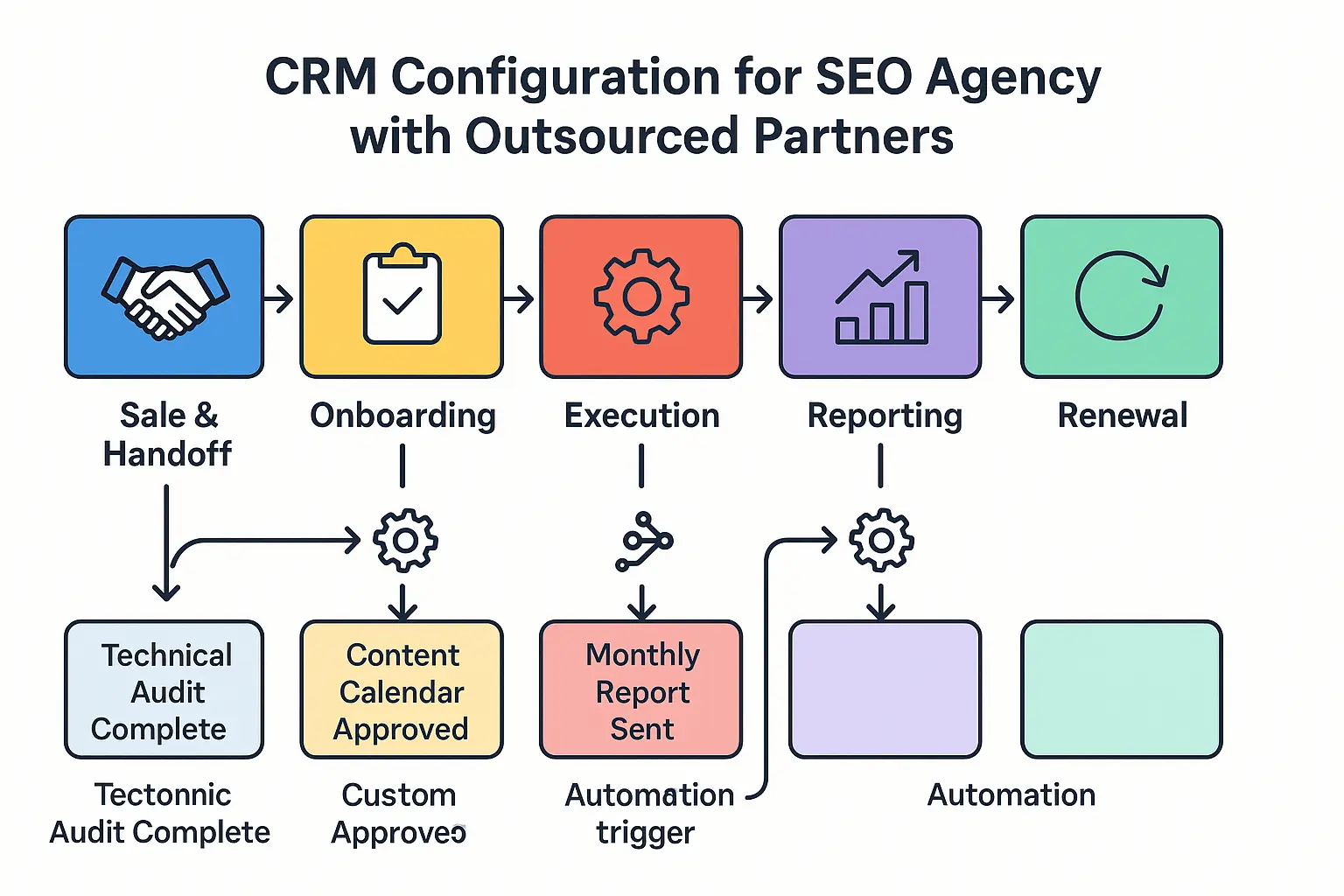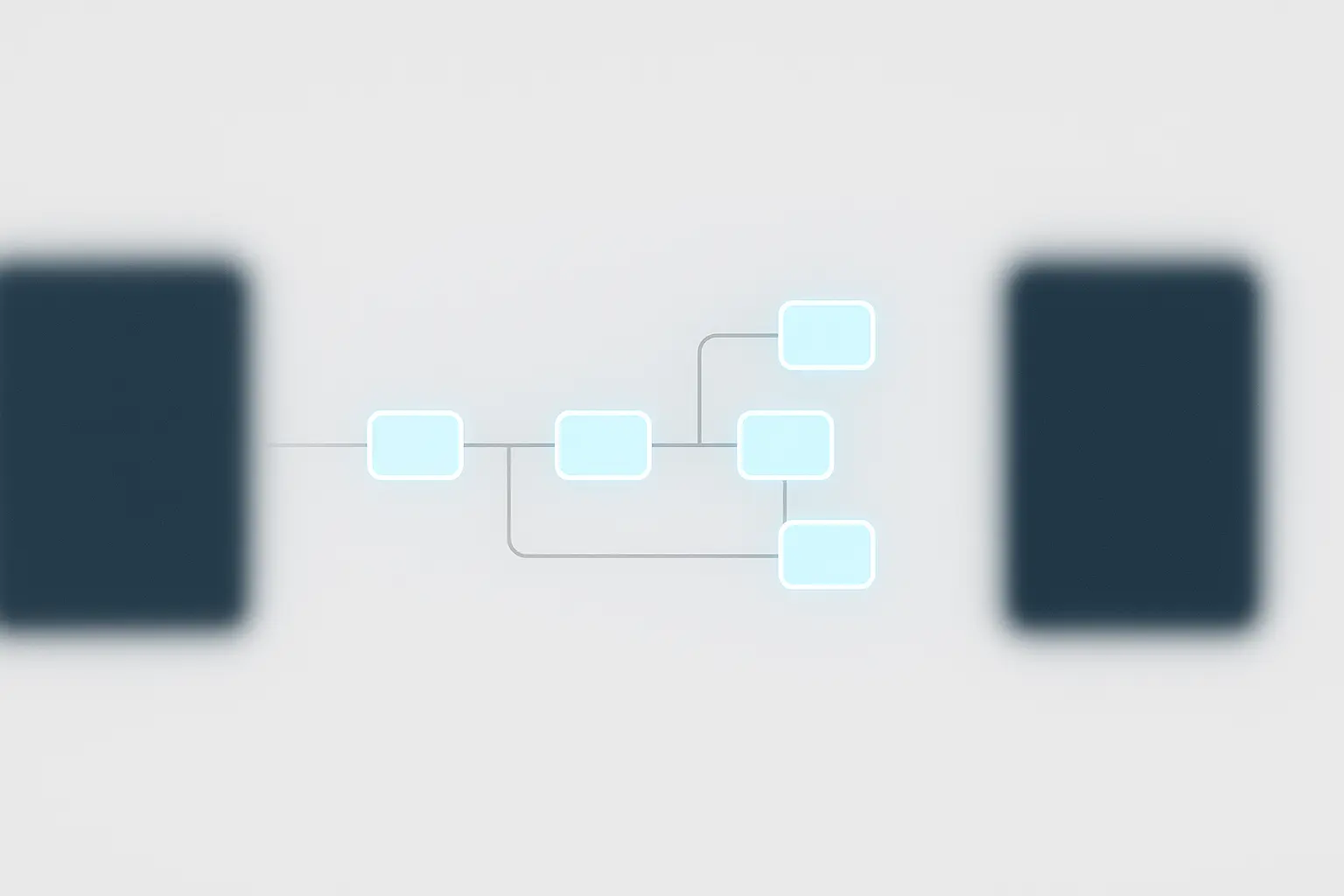You get a Slack notification from your head of accounts: “ClientX is asking for an update on their technical audit. Any news from the SEO team?”
You freeze for a second. The “SEO team” is your white-label partner. You fire off an email, hoping for a quick reply. Meanwhile, your account manager waits, and the client wonders.
If this scenario feels familiar, you’re not alone. The gap between your client-facing team and your delivery partner can feel like a black box. A staggering 50% of marketing and sales leaders find it challenging to align teams, processes, and systems—a challenge that’s only amplified when one of those teams is external.
The good news is that the solution isn’t another expensive piece of software. It’s already in your tech stack, likely underutilized: your CRM. By reconfiguring it from a simple sales tool into a client delivery command center, you can gain total visibility, streamline communication, and turn outsourced execution into a seamless extension of your agency.
From “Closed-Won” to “Happy Renewal”: Mapping the SEO Client Journey
Most agencies use their CRM to track a deal until it’s marked “Closed-Won.” But for your client, this is just the beginning of their journey. The real work of retention and growth happens after the sale.
A successful SEO client lifecycle involves several distinct phases:
-
Sale & Handoff: The initial agreement and transfer of information from sales to the account management and delivery teams.
-
Onboarding: Kickoff calls, gaining access to analytics and website backends, and finalizing the strategy.
-
Execution: The ongoing work of technical fixes, content creation, and authority building.
-
Reporting & Strategy: Delivering performance updates, analyzing results, and planning next steps.
-
Renewal: Proving value and securing the client relationship for another term.
Without a central system to track these stages, details fall through the cracks, leading to frantic emails and unhappy clients. This lack of visibility isn’t just chaotic—it’s costly. Research shows that poor data quality costs businesses an average of $15 million per year through inefficiency, missed opportunities, and customer churn.

But tracking this journey isn’t just about preventing problems—it’s about unlocking profit. Bain & Company found that a mere 5% increase in customer retention can boost profits by 25% to 95%. Visibility is the first step toward retention.
The Solution is Already in Your Tech Stack: Your CRM
So why is the CRM the perfect tool for the job? Because your top performers already live in it. A study by Innoppl Technologies found that 82% of top-performing salespeople attribute their success to using a CRM. They rely on it as their single source of truth for client relationships.
The problem is that this “truth” often ends once the sales commission is paid. To fix this, you need to extend your CRM’s capabilities to manage the entire post-sale lifecycle. Here’s how.
Step 1: Build a Delivery Pipeline with Custom Deal Stages
Most CRMs (like HubSpot, Salesforce, or Pipedrive) are built around the concept of a “pipeline” with “deal stages.” You likely have one for sales already, with stages like “Lead,” “Meeting Booked,” and “Proposal Sent.”
The next step is to create a second pipeline dedicated to client delivery. This “SEO Client Delivery” pipeline gives your team an at-a-glance view of every client’s journey with you and your partner.
Consider building your pipeline with stages like these:
Phase 1: Onboarding
- Internal Handoff Complete
- Kickoff Call Scheduled
- Client Access Granted
Phase 2: Strategy & Setup
- Technical Audit in Progress
- Keyword Research Approved
Phase 3: Active Execution
- Content Briefs Delivered
- Link Building Campaign Active
Phase 4: Reporting & Renewal
- Monthly Report Sent
- Quarterly Business Review (QBR) Scheduled
- Renewal Prep

Now, when your account manager syncs with your [white-label SEO services] partner, they just move the client’s card to the appropriate stage. The guesswork is gone.
Step 2: Create Custom Properties for Deeper Insights
While deal stages show you where a client is, custom properties tell you the crucial details. These are the custom data fields you create inside your CRM to track information unique to your agency’s process.
Think beyond the standard Contact Name and Company Size. To manage an outsourced SEO client, you need properties that act as a dashboard for each relationship.
Consider adding these custom properties to your CRM’s “deal” or “company” records:
-
Partner Point of Contact: A text field for the name or email of your main contact at the partner agency.
-
Last Milestone Update: A date field your account manager updates after each sync, creating a simple communication log.
-
Client Health Score (1-5): A dropdown or number property for your AM to subjectively rate client sentiment. A score that drops from 5 to 3 is an early warning to act.
-
Next Key Deliverable: A text field to note the next important milestone (e.g., “First draft of pillar page due”).
-
Renewal Date: A date property that can trigger automated reminders 90 days out, so you’re never caught off guard.

This level of detail transforms your CRM from a passive address book into an active client management system.
Putting It All Together: The Agency Ops Flywheel
With these two changes, you create a powerful and efficient workflow:
-
A salesperson closes a deal in the “Sales Pipeline.”
-
They move it to the first stage of the “Client Delivery Pipeline” to kick off the handoff.
-
The assigned Account Manager takes over, using the custom properties to manage communication with the client and your delivery partner.
-
As milestones are met, the AM updates the client’s deal stage.
-
Anyone at your agency can now open the CRM and see the exact status of any client in seconds.
This system is fundamental to your ability to [scale your agency]. It reduces administrative drag, empowers your team with information, and creates the operational backbone needed for growth. The impact is significant: when used effectively, CRM systems can improve sales and account management productivity by up to 34%.
Frequently Asked Questions (FAQ)
What if my CRM (e.g., Salesforce, Pipedrive) is different from HubSpot?
The terminology might change slightly, but the core concepts are universal. Look for features called “Pipelines,” “Stages,” “Custom Fields,” or “Custom Properties.” Every major CRM has them.
Who should be responsible for updating this information?
The agency’s Account Manager or Client Success Manager. Their role is to be the bridge between the client and the partner. This system empowers them to own that role by giving them a central place to log updates and track progress.
Isn’t this just creating more administrative work?
It’s a shift from low-value, reactive work (chasing down updates, answering surprise questions) to high-value, proactive work (a 5-minute update after a sync call). This small investment of time upfront saves hours of scrambling later and helps prevent costly client churn.
My team barely uses our CRM now. How do I get them on board?
You’re not alone. Statistics show that only 47% of businesses have a CRM adoption rate of over 90%. The key is to prove its value. When your team sees how this system eliminates fire drills and gives them instant answers before a client call, they’ll embrace it. Frame it as a tool that makes their lives easier, not a process that adds more clicks.
How does this integrate with SEO reporting?
The CRM tracks the delivery process and client health. The performance data comes from your partner’s deliverables. A great practice is to use a custom property in your CRM to link directly to the client’s reporting dashboard or latest PDF report. This truly makes the CRM the central hub for all client information, from [SEO reporting for agencies] to renewal dates.
Your Single Source of Truth for Client Success
Outsourcing SEO delivery shouldn’t mean sacrificing visibility or control. By tapping into the power already inside your CRM, you can build a transparent, efficient, and scalable system for managing the entire client lifecycle.
This single source of truth empowers your team, builds client trust, and transforms your relationship with your partner from a simple handoff into a truly integrated partnership. You’ll stop asking “What’s the status?” and start focusing on what truly matters: strategy, growth, and delivering incredible results for your clients.

